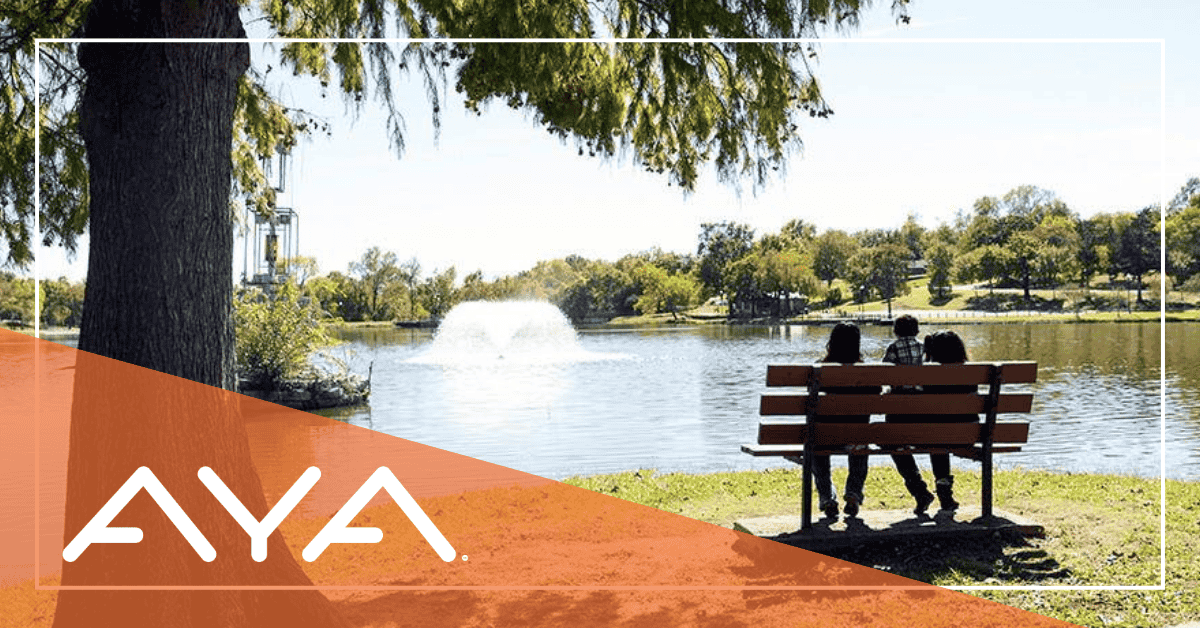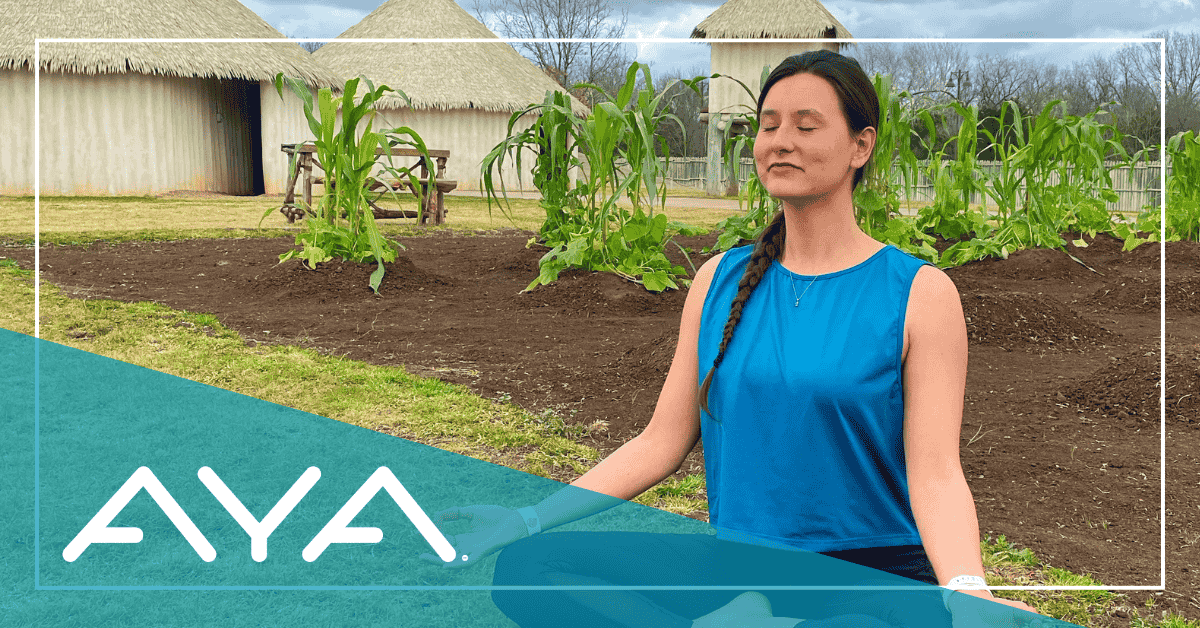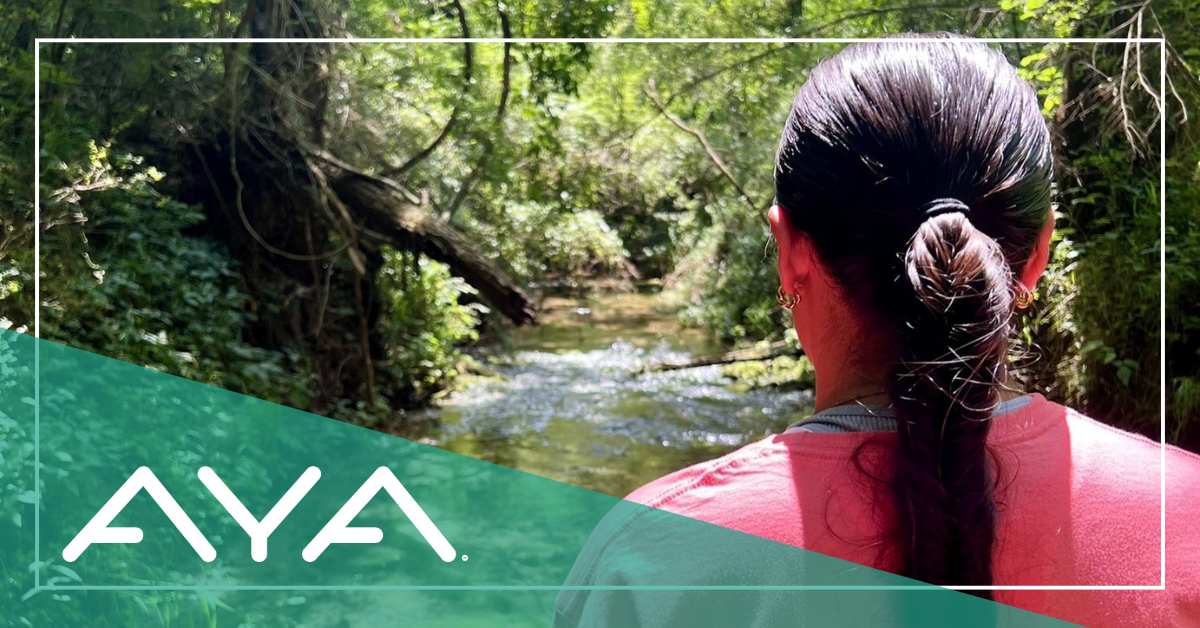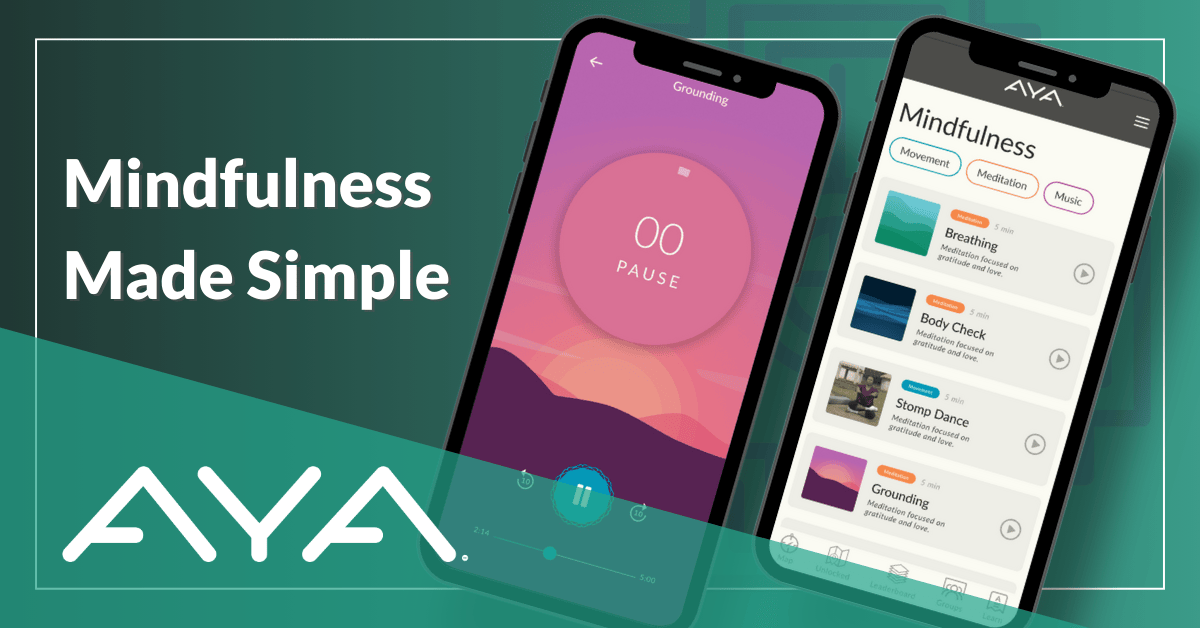Master Your Breath, Transform Your Mental Health
Discover how simple breathing exercises can reduce stress, improve focus and enhance your overall well-being in just minutes a day.

Meditation offers a powerful pathway to relaxation and inner peace. Through this practice, you gain the ability to calm your mind, settle your nerves and find joy in the present. People interested in meditation may face two primary challenges: understanding the practice itself and discovering practical ways to integrate it into daily life.
This guide addresses both challenges directly, providing a clear roadmap to begin experiencing the transformative benefits of meditation today. And with the meditation feature in the AYA Walk app, support for your journey is always at your fingertips.
At its core, meditation is the practice of focusing the mind to achieve peace in the present moment. Popular culture often portrays meditation as monks chanting in serene gardens, yoga instructors in complex poses or therapists guiding clients through affirmations. While these images contain elements of truth, they represent only a fraction of what meditation truly encompasses.
This ancient practice, refined over thousands of years across many cultures, has only recently received scientific attention. Research reveals two fundamental components at work during meditation: focused attention on a single point – such as your breath, a question or an object – and a deliberate, mindful response to that focus.
Consider this practical example: You settle into a comfortable chair, close your eyes and direct your attention to your breathing. You observe your chest rising and falling rhythmically. Thoughts naturally arise, but instead of following them, you acknowledge their presence and gently return your focus to your breath.
This simple exercise demonstrates the two key aspects of meditation: sustained focus and intentional awareness. The beauty of meditation lies in its simplicity – elaborate settings or advanced techniques are often optional.
One of the most powerful aspects of meditation is its accessibility for beginners and those who are experienced.
Before exploring meditation techniques, we examine why this practice deserves a place in your daily routine. Research consistently demonstrates that meditation provides remarkable benefits for both physical and mental well-being by:
These clinical benefits translate into powerful applications in everyday life:
An important meeting looms at day's end, dominating your thoughts and triggering anxiety. Five minutes of focused meditation creates mental distance from these concerns, clearing your mind and allowing you to organize your thoughts effectively.
Saturday afternoon arrives, and despite the demands of family, friends and pets, a significant problem requires your attention. Brief meditation while moving through your home creates mental space, enabling you to prioritize tasks and address challenges systematically.
The morning rush finds you running late, facing traffic and receiving notifications from work and friends while worrying about current events. Taking a moment to practice mindful awareness during your drive can help manage emotions and clarify your priorities for the day ahead.
Night brings racing thoughts about tomorrow's responsibilities, preventing restful sleep. Breathing exercises and gentle visualization can slow your mental activity, relax your body and help you transition naturally into restorative sleep.
Everyone starts somewhere, and even the most basic meditation practices yield profound results. The following seven essential steps, adapted from meditation experts, provide a solid foundation that you can personalize to suit your individual needs. These practices are reflected in the AYA Walk app's meditation feature, making it easier to stay consistent:
Select a quiet, peaceful environment for your practice. This might be your favorite armchair, a cozy corner of your sofa or a serene spot outdoors. The ideal location should offer you minimal distractions and maximum comfort.
Determine the duration of your meditation session before beginning. For beginners, five minutes provides an excellent starting point. Use a gentle timer to maintain your boundary without creating anxiety about watching the clock.
Position your body in a way that allows sustained comfort throughout your practice. Your posture should support alertness while preventing discomfort that might distract from your meditation experience.
Direct your attention to your breathing pattern. This natural, ever-present process serves as an ideal focal point for meditation. Observe the sensation of your chest and abdomen rising and falling with each breath.
Recognize that mind-wandering represents a normal part of meditation, not a failure. When you notice your attention drifting to thoughts, sensations or sounds, acknowledge this natural process without judgment.
Use your thoughts as a chance to practice acceptance. Rather than criticizing yourself or becoming entangled in thought content, simply note their presence and gently redirect your focus to your breath.
Conclude your practice with intention and awareness. Slowly open your eyes, reconnect with your surroundings through your senses and carry the meditative quality into your next activity.
These seven steps work by temporarily interrupting your default thinking patterns. Throughout most of your day, thoughts drive your experience – planning lunch, organizing weekend activities or anticipating work challenges. Meditation creates a valuable alternative, allowing focus and relaxation to guide your awareness instead.
While this process may feel unnatural initially, consistent practice develops familiarity and skill. Like any worthwhile endeavor, meditation rewards persistence with increasing benefits over time.
Meditation mastery lies within reach for everyone, regardless of how demanding life's schedule might be. The challenge of incorporating new habits into established routines often creates resistance, yet this represents a normal part of positive change rather than a reason to abandon your meditation aspirations.
With strategic implementation, meditation becomes an organic element of your day rather than another overwhelming obligation. The secret lies in understanding that small, consistent practices create meaningful progress over time.
Here are four practical strategies to try today:
Meditation is truly simple at its core. This practice invites you to briefly step away from the mental noise. It helps you shift from your usual thought patterns to a state where you are fully aware, accepting and slowing down – even if it is just for a few minutes of your day.
Through regular practice, you will notice real benefits: enhanced sleep quality, reduced stress and anxiety levels, greater control over racing thoughts and improved focus for challenging problems and important tasks.
As you begin, revisit the seven essential steps: create your refuge, set clear boundaries, establish physical comfort, anchor through breath, welcome mental movement, practice radical acceptance and transition mindfully.
Personalize your approach to mindfulness based on your unique circumstances and needs. Start with achievable goals and remember the four integration strategies: identify natural pauses, create accountability through planning, embrace flexibility within structure and do not give up.
For additional guidance on your meditation journey, explore these valuable resources:
The AYA Walk app meditation feature makes it easy to practice these techniques anywhere, anytime. Simply open the app, select the meditation option, and follow the guided sessions designed for various needs and timeframes. These features were created with accessibility in mind, because wellness should fit into your life. For additional meditation resources, explore our previous blog post “Move, Breathe, Meditate: AYA Helps Renew Body, Mind and Spirit.
Transformative mindfulness awaits just a few intentional breaths away – and support is available every step of the way.
Anowa chipisala'cho (until we meet again),
- The AYA Walk Team
References
Meyers, K. (2025, February 26). 9 techniques to help you calm down fast. Baton Rouge Clinic. https://batonrougeclinic.com/news-education/how-to-calm-down-fast/
Staff, M. (2025, January 21). How to meditate. https://www.mindful.org/how-to-meditate/
Team, C. E. (2024, February 13). Improve mental clarity with these 11 strategies. Calm Blog. https://www.calm.com/blog/mental-clarity
UC Davis Health. (2024, November 27). 10 health benefits of meditation and how to focus on mindfulness. health. https://health.ucdavis.edu/blog/cultivating-health/10-health-benefits-of-meditation-and-how-to-focus-on-mindfulness-and-compassion/2022/12
The AYA Walk App is a one-of-a-kind step counter that offers an exciting way to discover captivating narratives as you go about your daily routine.
The word "AYA" originates from the Chickasaw language and signifies "to go; to journey." As you take steps towards improving your fitness, AYA Walk accompanies you on this adventure, guiding you through time and unlocking stories from the past.
Along the way, you will stumble upon hidden treasures rooted in Chickasaw heritage, discover historical paths that unveil the secrets of the past, and have the chance to listen to stories about significant cultural landmarks.
AYA Walk celebrates more than just physical well-being; it also fosters a renewed connection to a healthier lifestyle. By engaging with this innovative step tracker, you'll improve your fitness and gain a deeper appreciation for the stories surrounding us.
Download AYA Walk today!

Discover how simple breathing exercises can reduce stress, improve focus and enhance your overall well-being in just minutes a day.

Have you ever felt refreshed after a walk in the park or noticed how your mood lifts when sunlight streams through your window? There is a reason for...

1 min read
Your Step-by-Step Guide to Getting Started with AYA's New Mindfulness Feature To enjoy AYA's new Mindfulness Feature and start your journey towards...